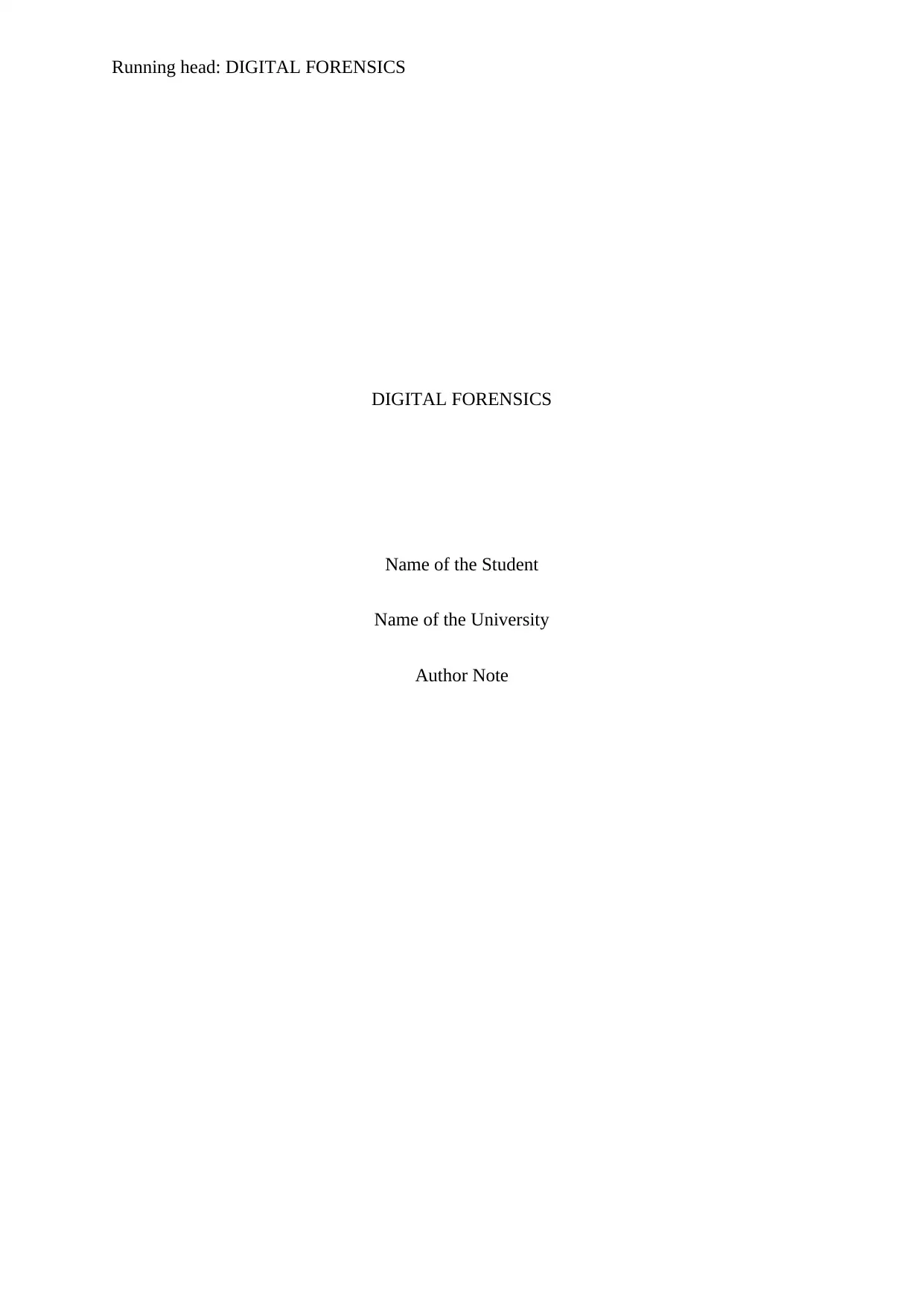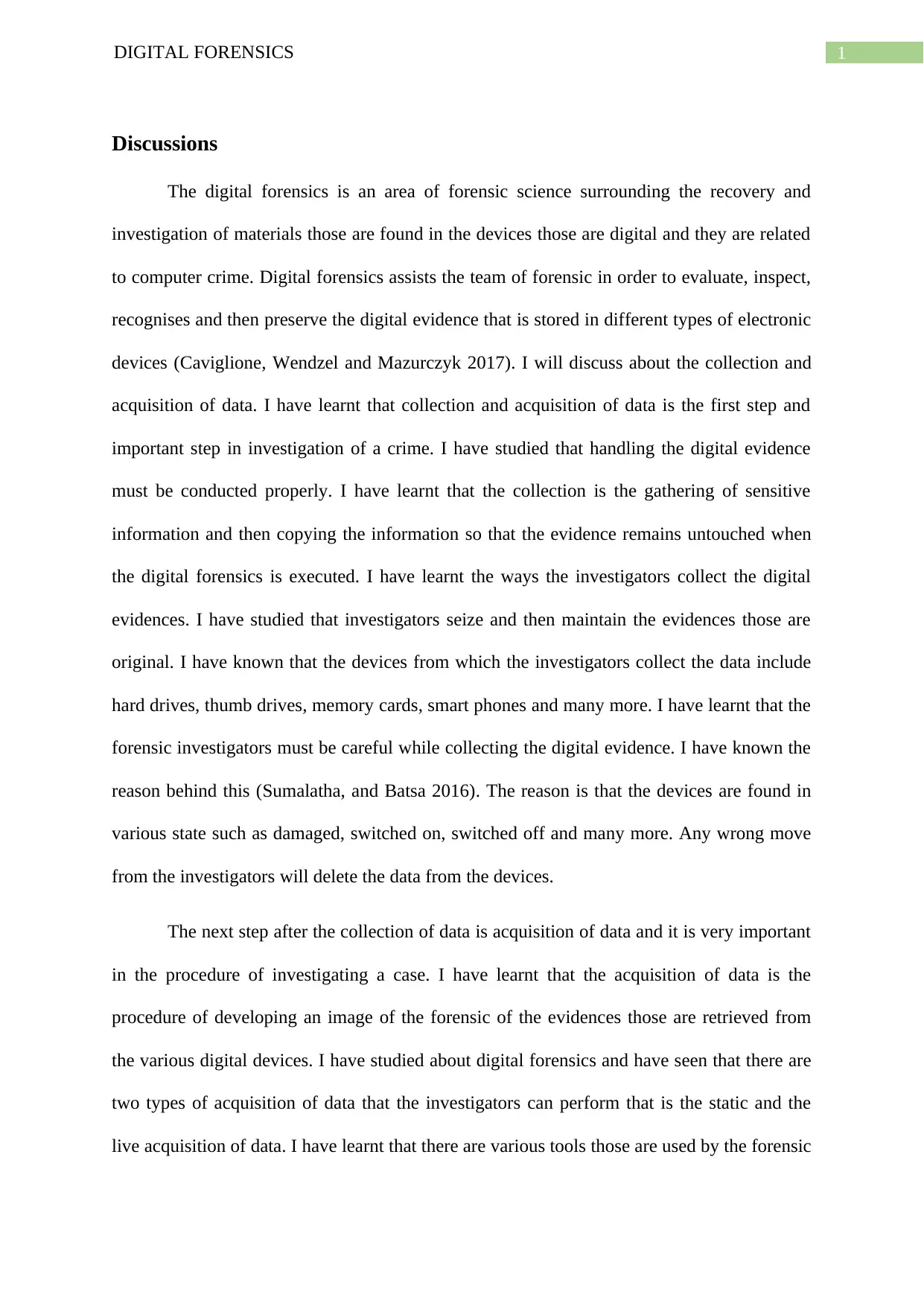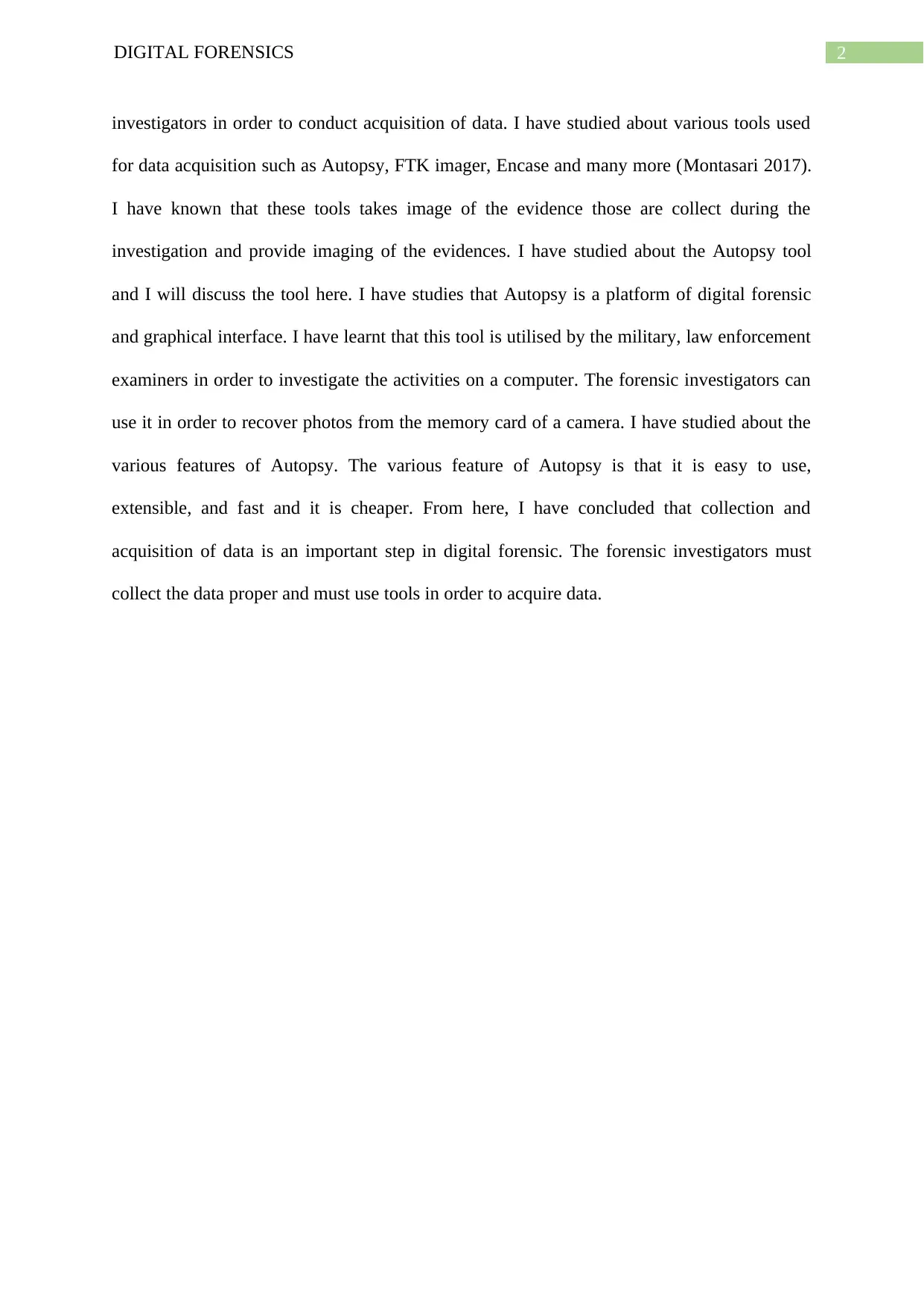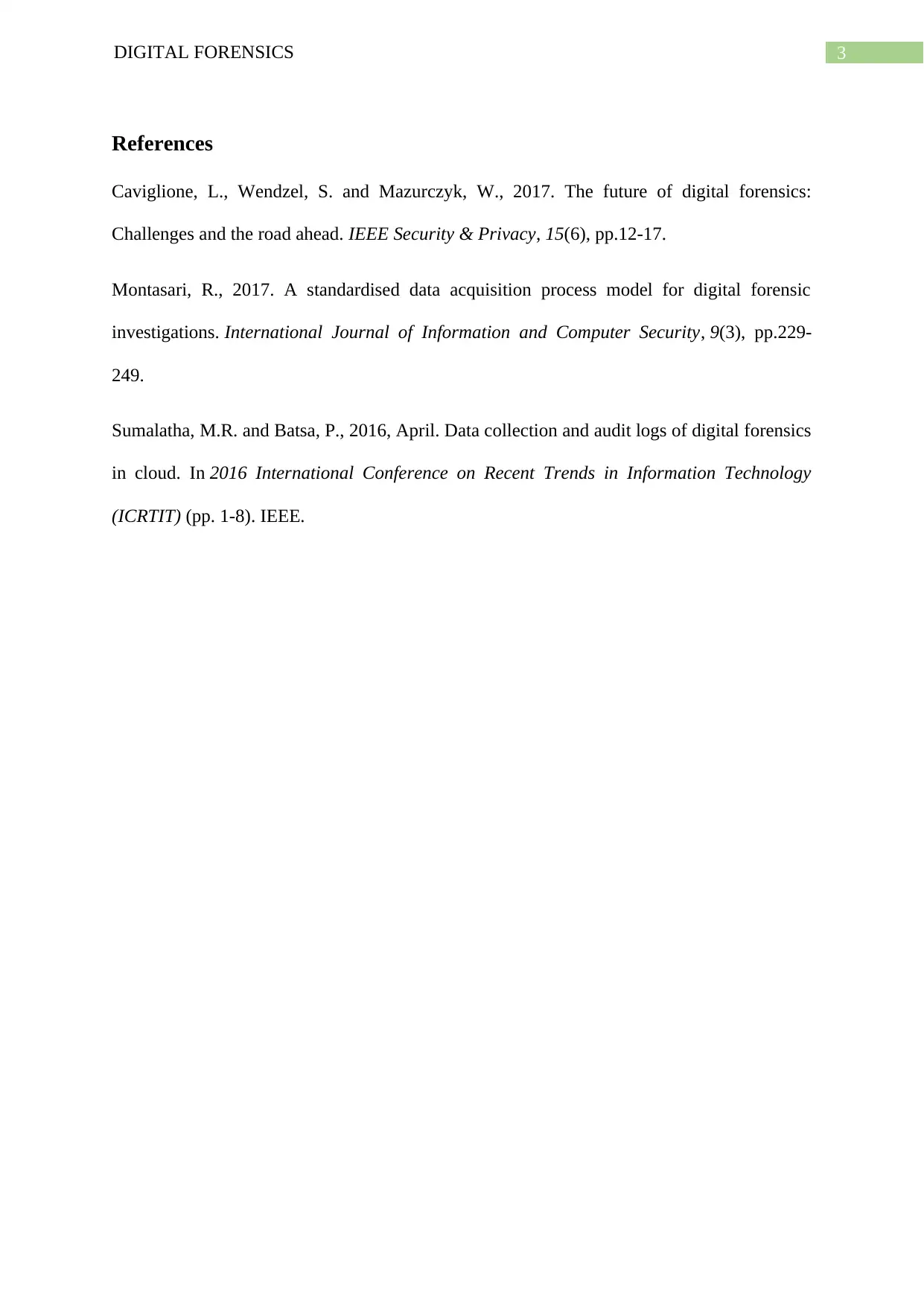Digital Forensics: Data Collection and Acquisition Report Analysis
VerifiedAdded on 2022/09/12
|4
|716
|17
Report
AI Summary
This report examines the crucial steps of data collection and acquisition in digital forensics. It emphasizes the importance of proper handling of digital evidence, detailing how investigators gather sensitive information from various devices like hard drives and smartphones. The report then explores data acquisition, the process of creating forensic images, and discusses the two main types: static and live acquisition. It highlights tools such as Autopsy, FTK Imager, and Encase, used to image and analyze collected evidence. Specifically, the report discusses Autopsy, a graphical interface platform used by law enforcement for computer investigations, including features like ease of use, extensibility, speed, and cost-effectiveness. The conclusion stresses the importance of meticulous data collection and the appropriate use of forensic tools in the investigation process.
1 out of 4











![[object Object]](/_next/static/media/star-bottom.7253800d.svg)